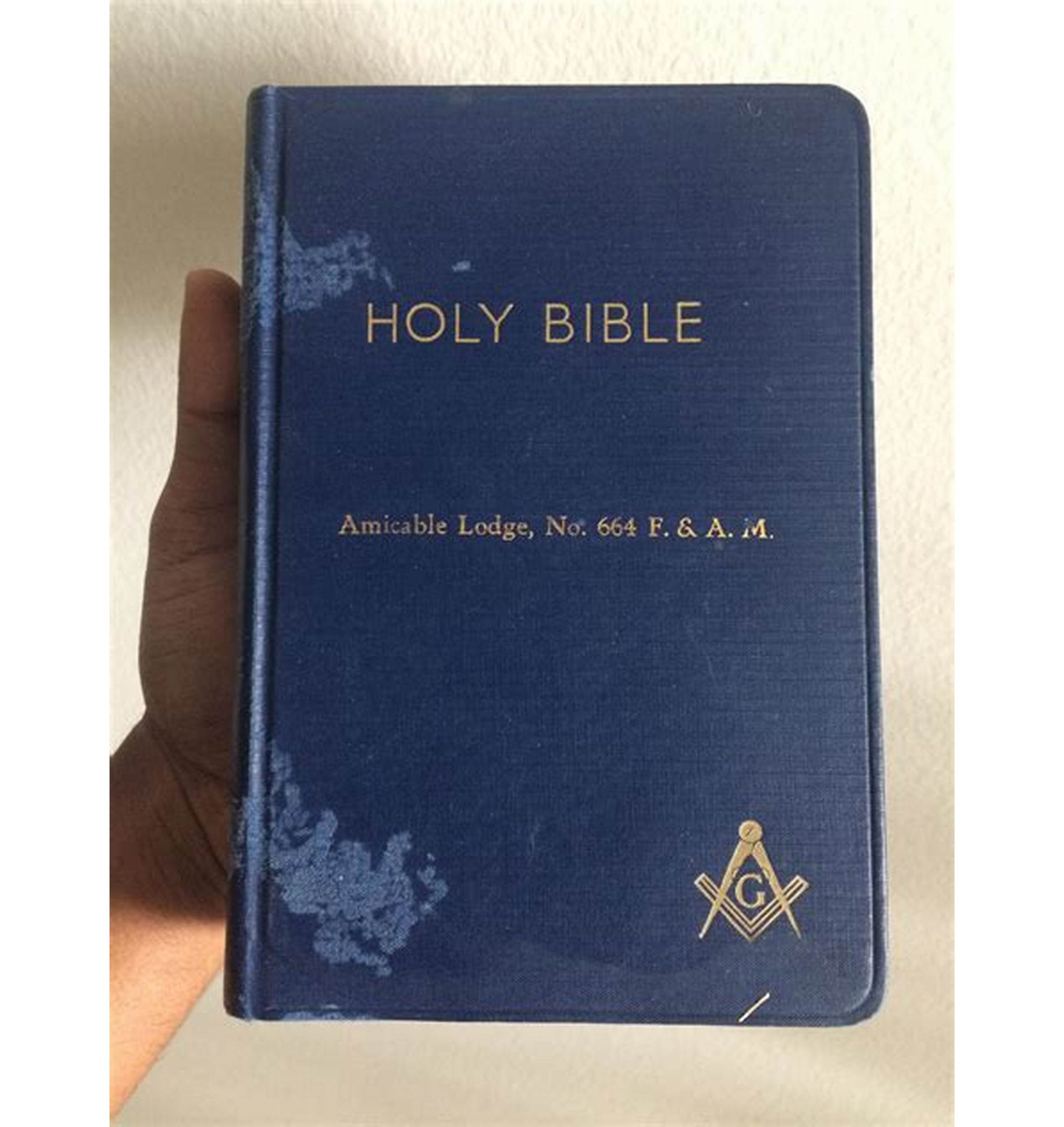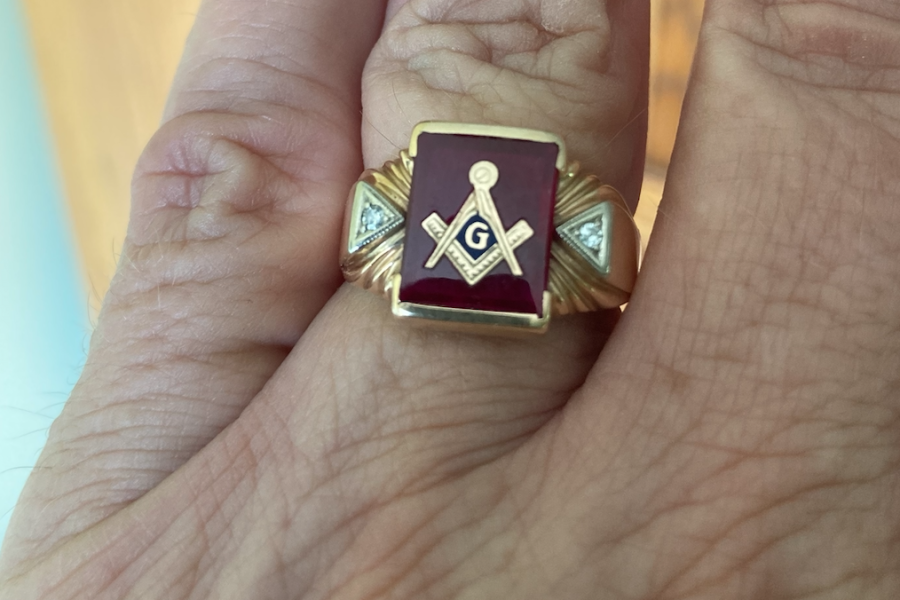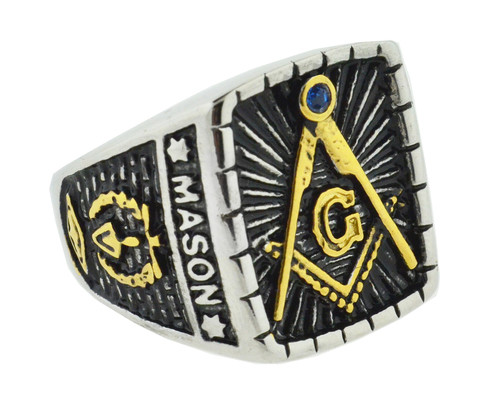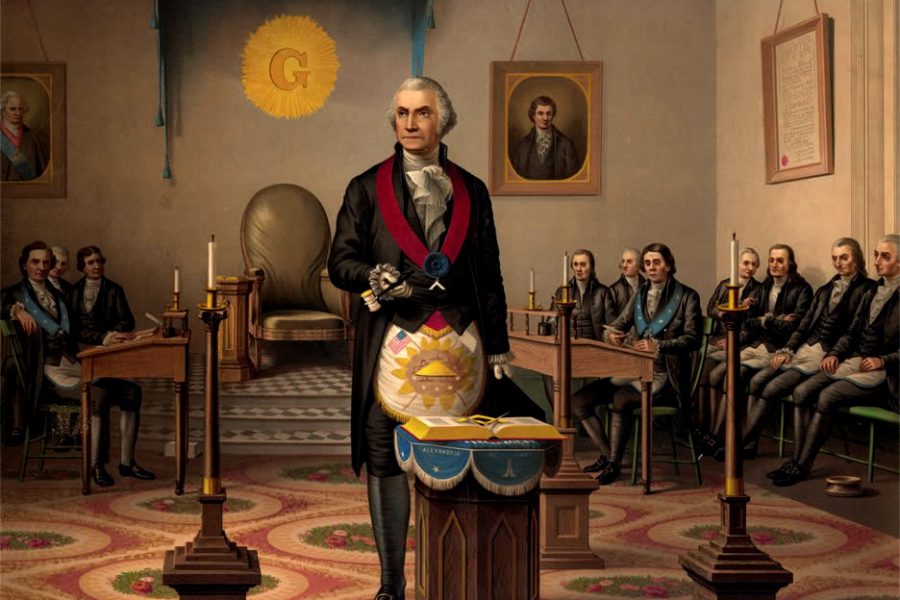Example of a Master Mason Masonic Ring
Freemasons are well known for our regalia, from the apron we dawn upon first entering the lodge, to the caps we earn in the later degrees of the appendant bodies. While aprons are indeed the most prominent part of Masonic garb, for each Mason is given one upon becoming an Entered Apprentice, rings too have become a common accessory in the fraternity. Although rings are not given to Brothers as part of their journeys in the craft, many receive them from family members, such as a father or grandfather, upon reaching the sublime degree of Master Mason.As part of our series on “Behind the Symbol,” we will explore the ancient history of rings, the “debate” regarding how Masons wear them, and some of the different styles found throughout the fraternity.Rings and their Ancient SymbolismLike much of the symbolism found in Freemasonry, rings have been used by cultures for thousands of years. Ancient Egyptians believe the hole of the ring represented the gateway to the afterlife and immortal love. Romans began the tradition of wedding rings, with men offering their partners iron rings called Anulus Pronubus to wear on their left hand, believing it connected directly to the heart. In Ireland and parts of the United States, the Claddagh ring remains a popular tradition. These Irish rings, symbolizing friendship, love, and loyalty feature two hands holding a crowned heart, and are often passed down through generations.Masonic Rings and the Appendant BodiesIn Freemasonry, the ring itself can symbolize eternity or one’s enduring connection with the fraternity. This piece of regalia rose to prominence in the craft during the 18th and 19th centuries. Masonry was at the height of its popularity and rings allowed brethren to identify one another in public.For many today, the Masonic ring represents a brother’s commitment to the secrets, lessons, and traditions of the craft. Because the lodge itself doesn’t provide each member with a ring, they are usually given as a gift, often from father to son, or grandfather to grandson, when the younger member is raised a Master Mason. As such, Masonic rings are deeply personal emblems, and their significance will vary from member to member.These articles of jewelry are not only limited to blue lodge Masons. Members of the York Rite, Scottish Rite, and Shriners often wear rings engraved with symbols relevant to those appendant bodies. For example, in the Scottish Rite, Northern Masonic Jurisdiction, 32nd Degree Scottish Rite Masons are allowed to wear a ring emblazoned with the double-headed Scottish Rite eagle. Other common symbols found in the 32nd degree rings include the number 32, triangles, and the Hebrew letter “yod.”Another feature that can determine the significance of a ring is the stones or engravings Freemasons choose to have included in them. Blue stones are common for members receiving a ring in the blue lodge. Red stones are regularly chosen for Brothers who have completed the fourth degree in Royal Arch Masonry or for members of the Shrine. The Different Meanings of Masonic Ring SymbolsIn addition to the personal significance, Masonic rings often feature other symbols from Freemasonry, such as the letter “G” or the square and compasses, which all have unique significance.Most often, rings include the square and compass and the letter “G.” The square and compasses is one of the most famous and identifiable symbols in Freemasonry, signifying the tools of the architect and builder. This symbol refers to the ancient stonemasons from which Freemasonry arose and is a critical part of our history. This symbol is also part of the lessons taught in the Masonic lodge.The square and compasses consist of the builder’s square: two equal flat-edged metal or wooden arms fixed that form a perfect “right angle.” This tool is critical in stonemasonry because it allows craftsmen to draw and carve perfect square corners, which is critical to raising structurally strong and sound buildings. In Freemasonry, this symbol is used to teach lessons of morality and that being “square” in your actions implies being honest and fair.The compasses consist of two legs equal in length that are fixed together at their apex by an adjustable hinge. This tool is used in geometry to draw perfect circles and arcs, a crucial element of architectural planning. In the blue lodge, the compasses symbolize self-restraint and man’s ability to reign in his yearnings so that he may live a balanced life.The letter “G” is most commonly found in the United States and often appears at the center of the square and compasses. Some Freemasons feel the “G” refers to geometry, a central concept for the Masonic moral lessons featuring builders and architects, while others see it as a reference to God, or the “Great Architect of the Universe.” How to Wear a Masonic RingThere isn’t necessarily a correct way to wear any of the Masonic rings, regardless of their symbolism. But ask a traveling man and there is a good chance he will have an opinion of his own on what is right. Some believe a ring featuring the square and compasses must be worn with the points facing toward your heart as a reminder of the Freemason’s obligations. For a Worshipful Master or Past-Master of a Lodge, it is believed they have become knowledgeable enough to turn the ring outwards and display the points toward the world.More functionally – although less common today, Masons used to wear rings as a way to seal letters with wax. Those Masons would wear their rings with the points of the compasses facing out, so that when pressed into warm wax, sealing a letter or contract, the emblem would be facing the correct direction.How a brother chooses to wear a ring and what symbols are emblazoned on it is a personal choice. Above all else, Masonic rings are to be worn with pride and reverence to our fraternity and its ancient traditions. When worn with care and consideration, it is an excellent way to demonstrate one’s pride in being a Freemason.

masonic bible
Masonic Bible Explore the significance of the Masonic Bible—rich in symbolism and tradition. Discover editions crafted for Freemasons and enhance your journey today! 📖 Masonic




